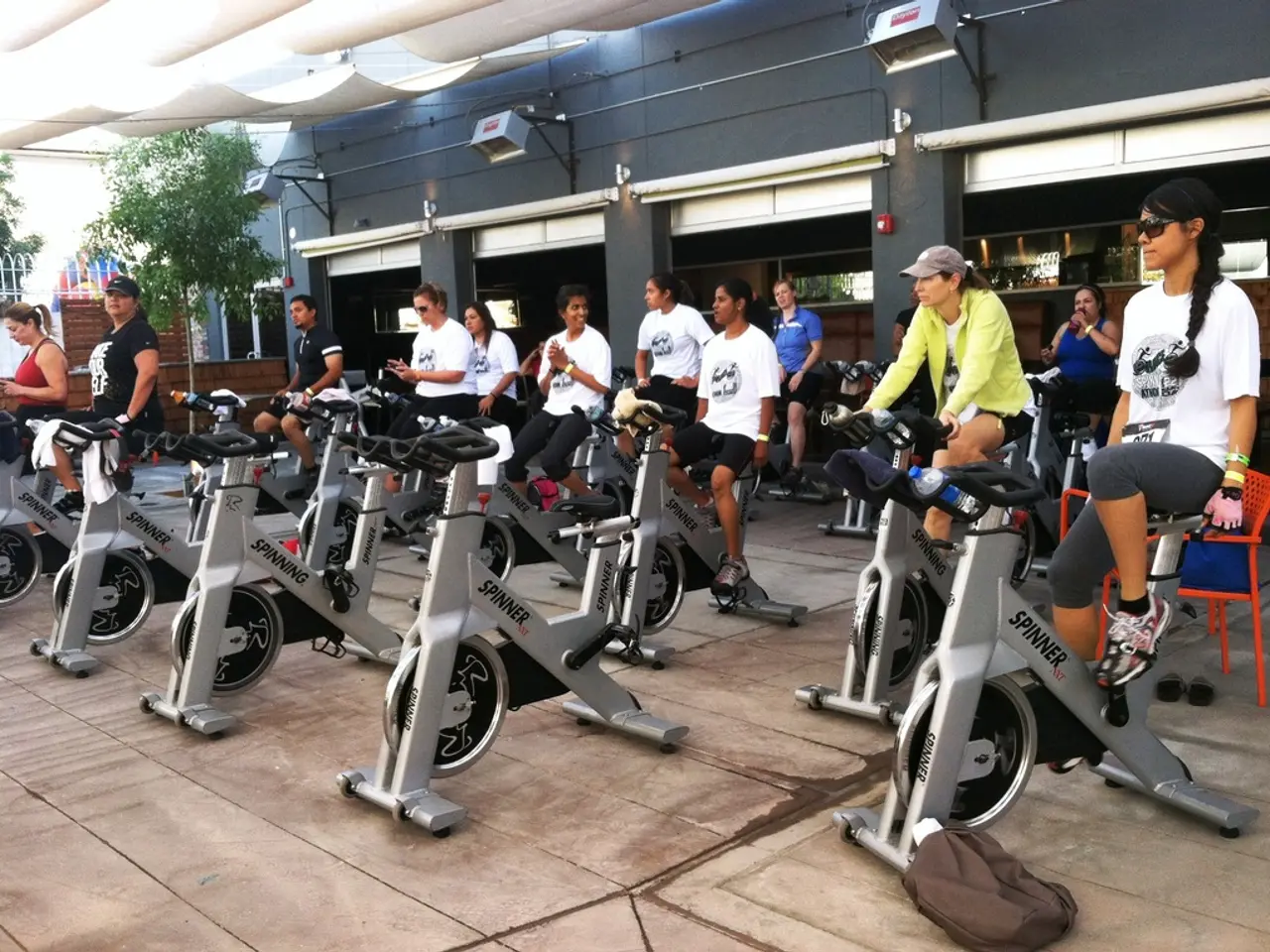Connections Between Physical Activity and Psoriasis, Explored Further
Psoriasis, an autoimmune skin condition affecting approximately 2-3% of the global population, can be managed effectively through a combination of treatments and lifestyle changes. One such change is exercise, which, while presenting some challenges, offers numerous benefits for people with psoriasis.
Eating a balanced, nutritious diet with anti-inflammatory properties can help maintain a moderate weight and manage psoriasis. Exercise, too, plays a crucial role in weight management, as obesity is linked with increased psoriasis severity. Regular physical activity can contribute to weight loss, potentially reducing symptom severity and enhancing medication effectiveness [5].
However, physical activity also presents challenges such as increased sweating, skin friction, or trauma that may exacerbate symptoms in some cases. Athletes or active individuals with psoriasis need to be cautious about skin trauma, sweating, and friction, which can trigger or worsen lesions [1].
To mitigate these risks, it is essential to wear loose, breathable clothing and moisture-wicking fabrics that help pull moisture away and allow it to evaporate quickly. Tight clothing can worsen skin sensitivity, irritate the skin, and aggravate psoriasis patches during workouts [3].
While psoriasis has no cure, treatments and lifestyle changes, such as exercise and diet, can reduce symptoms and improve quality of life. Exercise can help reduce stress and anxiety, which are known triggers for psoriasis flare-ups, and improve overall mental well-being, potentially helping in the management of psoriasis symptoms [2].
The National Psoriasis Foundation recommends at least 30 minutes of moderate exercise plus strength training at least five times a week for people with psoriasis. Aim for consistency and frequency rather than duration in physical activity. This may include taking the stairs instead of the elevator and walking to run errands [6].
People with psoriatic arthritis may need to avoid high impact exercises and opt for low impact activities like swimming and cycling. Modifying workouts can maintain momentum if part of the workout aggravates symptoms. For example, a person can do a different exercise to target the same muscle if the current routine is causing pain or discomfort [3].
Releasing tense muscles can help reduce inflammation and pain. Using foam rollers and getting massages can help release the tension from these muscles [7]. Taking rest days in between exercises can also allow the body to recuperate and not overwork areas that are inflammation-prone.
If a person does not feel confident in a gym or a flare hinders their performance, they can exercise at home. There are plenty of workout videos online, including strength training, yoga, and core workouts [8]. It is recommended to speak with a healthcare professional or dermatologist to explore exercise options suitable for individuals with psoriasis.
Remember, while exercise is beneficial mainly through stress reduction and weight management, individuals with psoriasis should balance activity with skin care to prevent irritation or flare-ups triggered by physical factors [1][4][5].
[1] National Psoriasis Foundation. (2021). Exercise and Psoriasis. Retrieved from https://www.psoriasis.org/about-psoriasis/triggers-and-causes/exercise-and-psoriasis
[2] National Psoriasis Foundation. (2021). Stress and Psoriasis. Retrieved from https://www.psoriasis.org/about-psoriasis/triggers-and-causes/stress-and-psoriasis
[3] National Psoriasis Foundation. (2021). Exercise and Psoriatic Arthritis. Retrieved from https://www.psoriasis.org/about-psoriasis/psoriatic-arthritis/exercise
[4] National Psoriasis Foundation. (2021). Yoga and Psoriasis. Retrieved from https://www.psoriasis.org/about-psoriasis/treatment/psoriasis-and-complementary-therapies/yoga
[5] National Psoriasis Foundation. (2021). Obesity and Psoriasis. Retrieved from https://www.psoriasis.org/about-psoriasis/triggers-and-causes/obesity-and-psoriasis
[6] National Psoriasis Foundation. (2021). Physical Activity Guidelines for People with Psoriasis. Retrieved from https://www.psoriasis.org/about-psoriasis/treatment/treatment-overview/physical-activity-guidelines
[7] National Psoriasis Foundation. (2021). Massage Therapy and Psoriasis. Retrieved from https://www.psoriasis.org/about-psoriasis/treatment/psoriasis-and-complementary-therapies/massage-therapy
[8] National Psoriasis Foundation. (2021). At-Home Workouts for People with Psoriasis. Retrieved from https://www.psoriasis.org/about-psoriasis/treatment/psoriasis-and-complementary-therapies/at-home-workouts
- For individuals with psoriasis, it's essential to consider establishments such as a healthcare professional or dermatologist before adopting fitness-and-exercise routines, as this may help avoid exacerbating skin conditions.
- Treaters and medical-professionals have determined that a balanced health-and-wellness regimen, consisting of a nutritious diet, regular skin-care, and moderate exercise, can effectively manage symptoms of psoriasis and improve quality of life.
- Beyond stress reduction and weight management, integrating skin-care practices into exercise routines is vital for persons with psoriasis, as it helps prevent irritation or flare-ups triggered by physical factors.
- The National Psoriasis Foundation advocates a combination of skin-care and fitness-and-exercise for those with psoriasis, recommending loose, breathable clothing and moisture-wicking fabrics to help combat increased sweating, skin friction, or trauma during workouts.
- In addition to exercise, massage therapy and foam rolling can contribute significantly to reducing inflammation and pain associated with psoriasis symptoms, as they help release tense muscles in the body.




